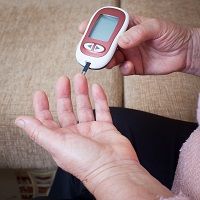Are Patients Underdosing Insulin Glargine?
Insulin glargine, a commonly used treatment for type 2 diabetes mellitus, may be more effective when administered at a higher dose, according to results from a phase 3 study.

A commonly used treatment for type 2 diabetes mellitus may be more effective when administered at a higher dose, according to results from a phase 3 study reported by Robert Ritzel, of Bogenhausen Hospital in Germany, and colleagues at the American Diabetes Association 75th Scientific Sessions in Boston, MA.
While 100 U/mL (Gla-100) has been the typical dosage for insulin glargine for the past 15 years, researchers found success in certain patients using 300 U/mL (Gla-300). The current study was designed to compare the efficacy and safety of Gla-300 and Gla-100, as well as analyze the potential for an increased risk of hypoglycemia.
A unique feature of insulin glargine is that a particle forms following injection. Over time that particle begins to dissolve into the bloodstream, however, the dosage changes the rate at which that occurs. Gla-100 has a half-life of 12 to 13 hours and Gla-300 clocks in around 18 hours.
Nearly 2,000 patients with type 2 diabetes — with 983 taking Gla-100 and the other 1,011 taking Gla-300 – were examined over the course of the year after a 2-week screening process. The participants’ glycemic control levels were measured at various points during that time and the results showed comparable data at the 6-month and 12-month marks.
“Gla-300 provided more sustained glycemic control compared with Gla-100, with greater up-titration of insulin dose during the first weeks,” the authors wrote.
The rate of severe hypoglycemic events proved to be slightly less frequent in the Gla-300 group (40 patients or 3.2%) when compared the Gla-100 group (45 patients or 3.6%). The researchers noted that this was most apparent during nighttime hours but was consistent overall. Patients taking the new prescription dosage experienced less weight gain as well.
The researchers cautioned that although there were obvious benefits in the Gla-300 group that does not mean that all patients should be switched. Action should be considered in those who have not experienced the best results with Gla-100 or with hypoglycemic problems.
“New insulin glargine 300 U/mL has more stable and prolonged pharmacokinetic and pharmacodynamics profiles compared with insulin glargine 100 U/mL, providing prolong glycemic control beyond 24 h,” the team confirmed.